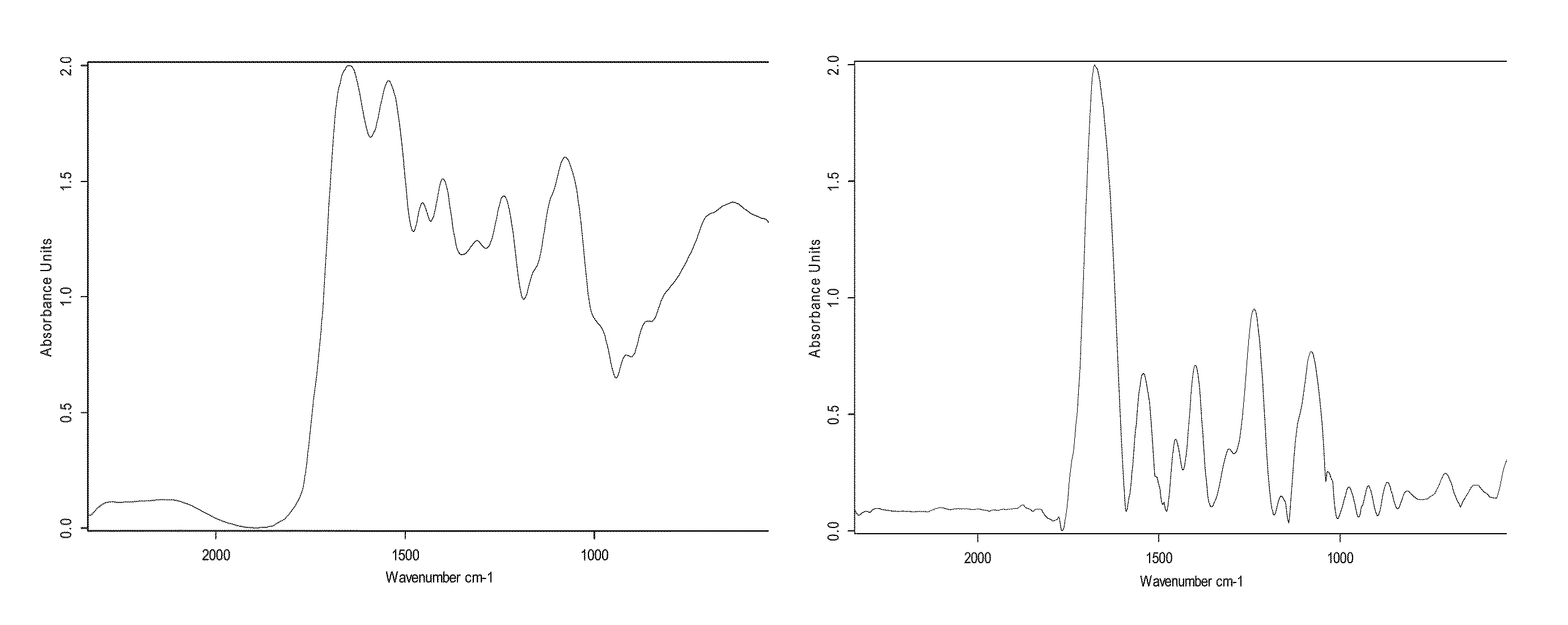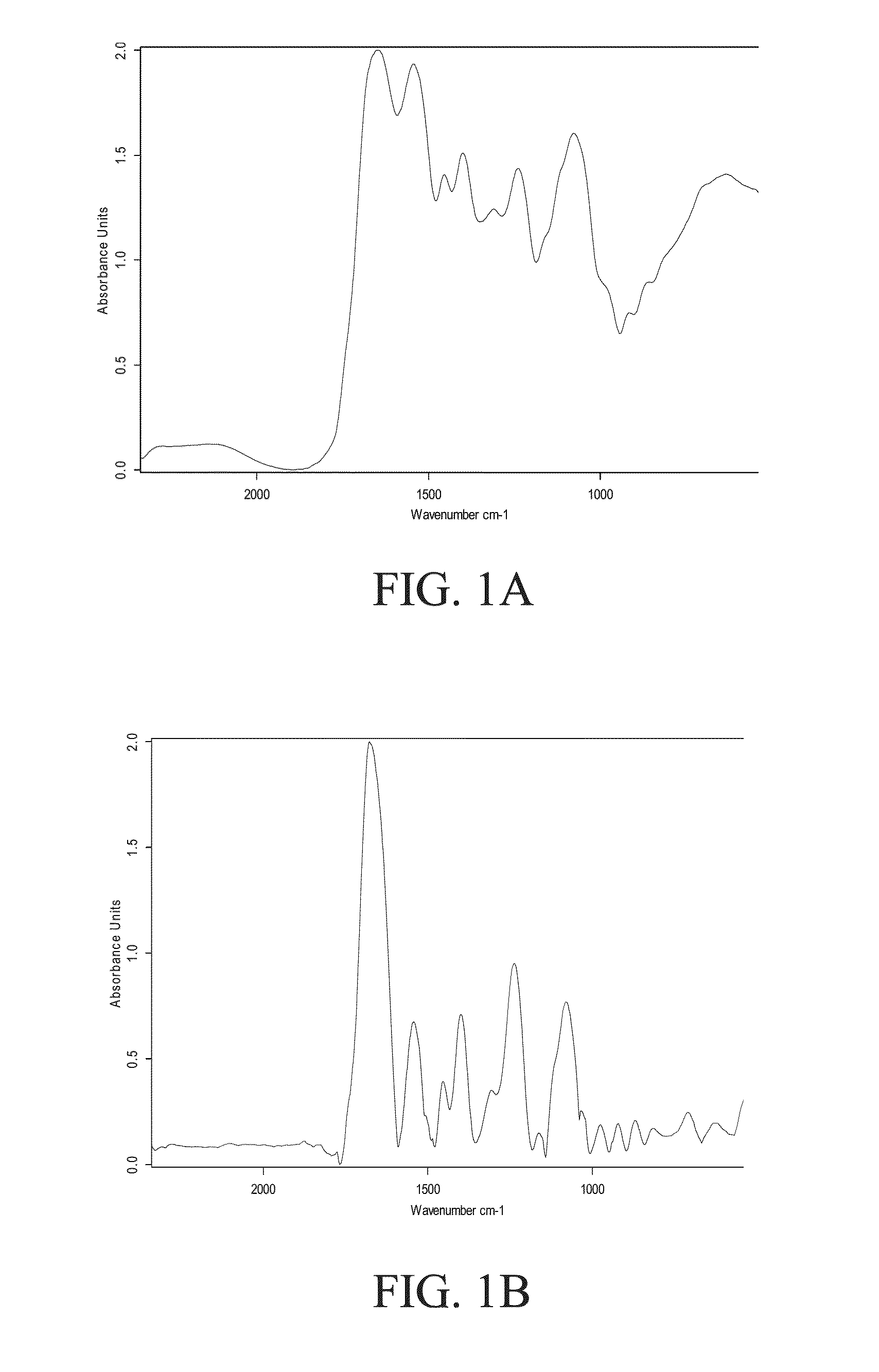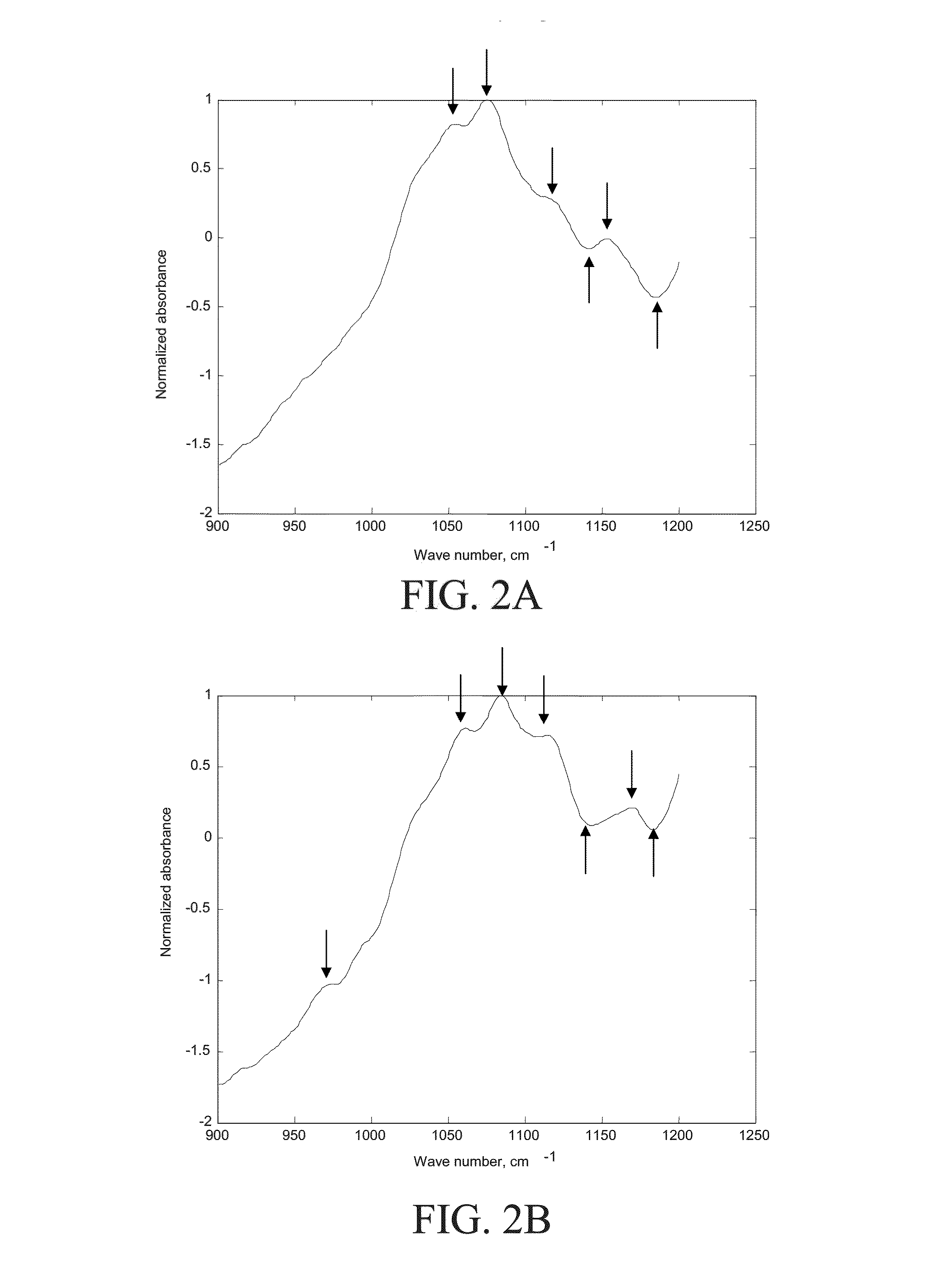Spectroscopic means and methods for identifying microorganisms in culture
a technology of microorganisms and spectroscopic means, applied in the field of spectroscopic means and methods for identifying microorganisms in culture, can solve the problems of taking a significant amount of time and hour) to produce, performed by a qualified professional technician, and achieve the effect of reducing noise and optimizing the contribution of water signal
- Summary
- Abstract
- Description
- Claims
- Application Information
AI Technical Summary
Benefits of technology
Problems solved by technology
Method used
Image
Examples
example 1
[0090]Each type of bacterium has a unique spectral signature. Although many types of bacteria have similar spectral signatures, there are still some spectral differences that are due to different proteins on the cell membrane and differences in the DNA / RNA structure. Reference is now made to FIG. 10, which presents typical IR spectra (normalized absorbance as a function of energy in cm−1) of two different species of bacteria, Enterobacter aerogenes (FIG. 10A) and Enterobacter cloacae (FIG. 10B). As can be seen from the figures, while the two spectra are broadly similar in structure, differences in detail can be seen, and these differences are sufficiently large to enable differentiation between the two species by use of the method disclosed herein.
example 2
[0091]Reference is made to FIGS. 11-22, which provide additional examples of IR absorption spectra (normalized absorbance as a function of energy in cm−1) of various species of bacteria are shown. In some cases, unique features of the spectrum are indicated by arrows. The species of bacteria, and number of strains of each species uniquely identified by the spectra, are summarized in Table 1. As can be seen from the figures, the method disclosed herein is able not only to distinguish between different species of bacteria, but between different strains of a single species of bacteria.
[0092]
TABLE 1FIG.Species of bacteriumnumber of strains11E. coli112Enterobacter aerogenes213Enterobacter cloacae314Enterococcus faecalis215Enterococcus faecium116Klebsellia pneumoniae617Proteus mirabilis118Pseud. aeruginosa319Serratia marcescens320Staph. aureus121Staph. epidermidis122Str. agalactiae gr. B1
example 3
[0093]The following examples illustrate in-vitro examples to provide a method to distinguish between different kinds of bacteria.
[0094]First, during the training phase, the system was introduced with samples of each bacterium in the database, based on which a statistical model was estimated for each bacterium and saved in memory. This process resulted in several statistical models, each represents a type of bacteria. During the testing phase, the system was presented with “new” samples, i.e., samples that it never “saw” before, and data analysis and processing was performed. The system compared each bacteria pattern to each one of the models saved in memory during the training phase. A likelihood score was assigned to each model. The model that provided the maximum score was the selected as the classification decision.
[0095]Reference is now made to FIG. 23, which presents two examples of identification of bacteria according to the method disclosed herein. Presented are graphs in PCA...
PUM
| Property | Measurement | Unit |
|---|---|---|
| diameter | aaaaa | aaaaa |
| significance threshold | aaaaa | aaaaa |
| diameter | aaaaa | aaaaa |
Abstract
Description
Claims
Application Information
 Login to View More
Login to View More - R&D
- Intellectual Property
- Life Sciences
- Materials
- Tech Scout
- Unparalleled Data Quality
- Higher Quality Content
- 60% Fewer Hallucinations
Browse by: Latest US Patents, China's latest patents, Technical Efficacy Thesaurus, Application Domain, Technology Topic, Popular Technical Reports.
© 2025 PatSnap. All rights reserved.Legal|Privacy policy|Modern Slavery Act Transparency Statement|Sitemap|About US| Contact US: help@patsnap.com



